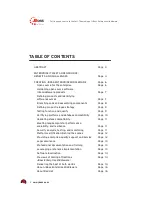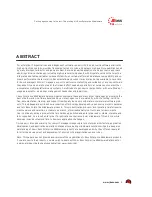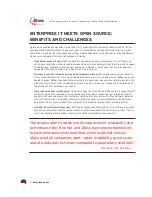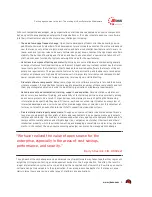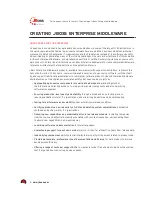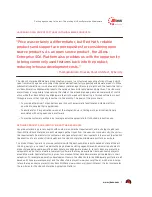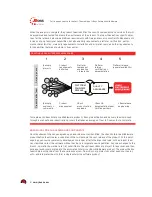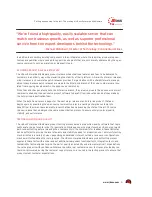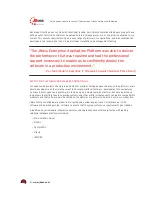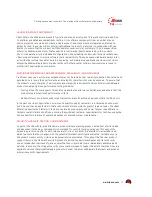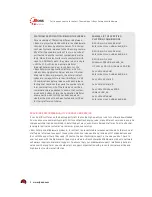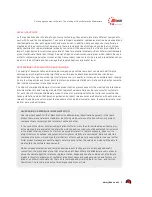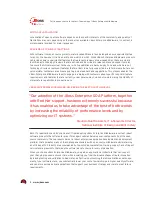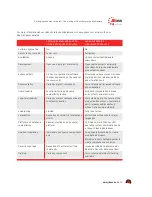
Putting open source to the test: The making of JBoss Enterprise Middleware
www.jboss.com
11
VAlidAting stAck cOMPAtibility
JBoss Enterprise Middleware products typically undergo diverse types of integration testing in addition
to platform and database compatibility testing. First, software components from a number of open
source projects are combined to create a single product, and these must be integrated and tested to-
gether. Second, the various JBoss Enterprise Middleware products are tested in combination with one
another to ensure that the product portfolio operates seamlessly for customers. Third, because JBoss
Enterprise Middleware can form the foundation for software products delivered by other vendors
(ISVs) — in separate or fully-embedded configurations — these leading vendors also test and validate new
JBoss product releases to ensure software stack compatibility. Finally, because middleware always inter-
acts with other software used for building, deploying, and maintaining applications and services, JBoss
Enterprise Middleware products are also tested with other popular software tools commonly found in
enterprise IT application environments.
MEEting rEquirEMEnts fOr PErfOrMAncE, scAlAbility, And rEsiliEncE
Traditional open source software components may not be tested under realistic production transaction and
data loads. As a result, their performance and scalability characteristics may be unknown. To ensure that
the products meet enterprise IT performance and scalability requirements, JBoss Enterprise Middleware
products undergo rigorous performance testing including:
Testing of specific components to identify and eliminate performance bottlenecks and ensure that the
•
product meets established performance criteria.
Reliability tests of products under high transaction loads for extended periods of time (24-36 hours).
•
In the past, the JBoss Application Server was frequently used by customers in a clustered environment,
but it may not have been tested in that environment before community project release. Today, the JBoss
Enterprise Application Platform is tested in clustered environments, and newer failover capabilities are
tested in realistic failure conditions, ensuring they will meet customer requirements for continuous applica-
tion availability in the face of unplanned outages or planned system maintenance.
sEcurity AnAlysis, tEsting, And MOnitOring
As part of the JBoss Enterprise Middleware product release planning process, a manifest of all included
and dependent technology components is developed for security tracking purposes. Throughout the
hardening process and prior to each release (major, minor, or patch), this manifest is reviewed and up-
dated to ensure that any changes with the potential to impact security are evaluated, tested to ensure
the product meets security criteria, and appropriately documented. Throughout the five year product
support lifecycle, the Red Hat Security Response Team continuously investigates and tracks security
issues, categorizes their severity, and ensures that any critical defects are immediately addressed and
patched. In essence, the stringent security processes developed to support Red Hat Enterprise Linux are
applied to JBoss Enterprise Middleware products in order to deliver middleware that meets and exceeds
enterprise security requirements.


